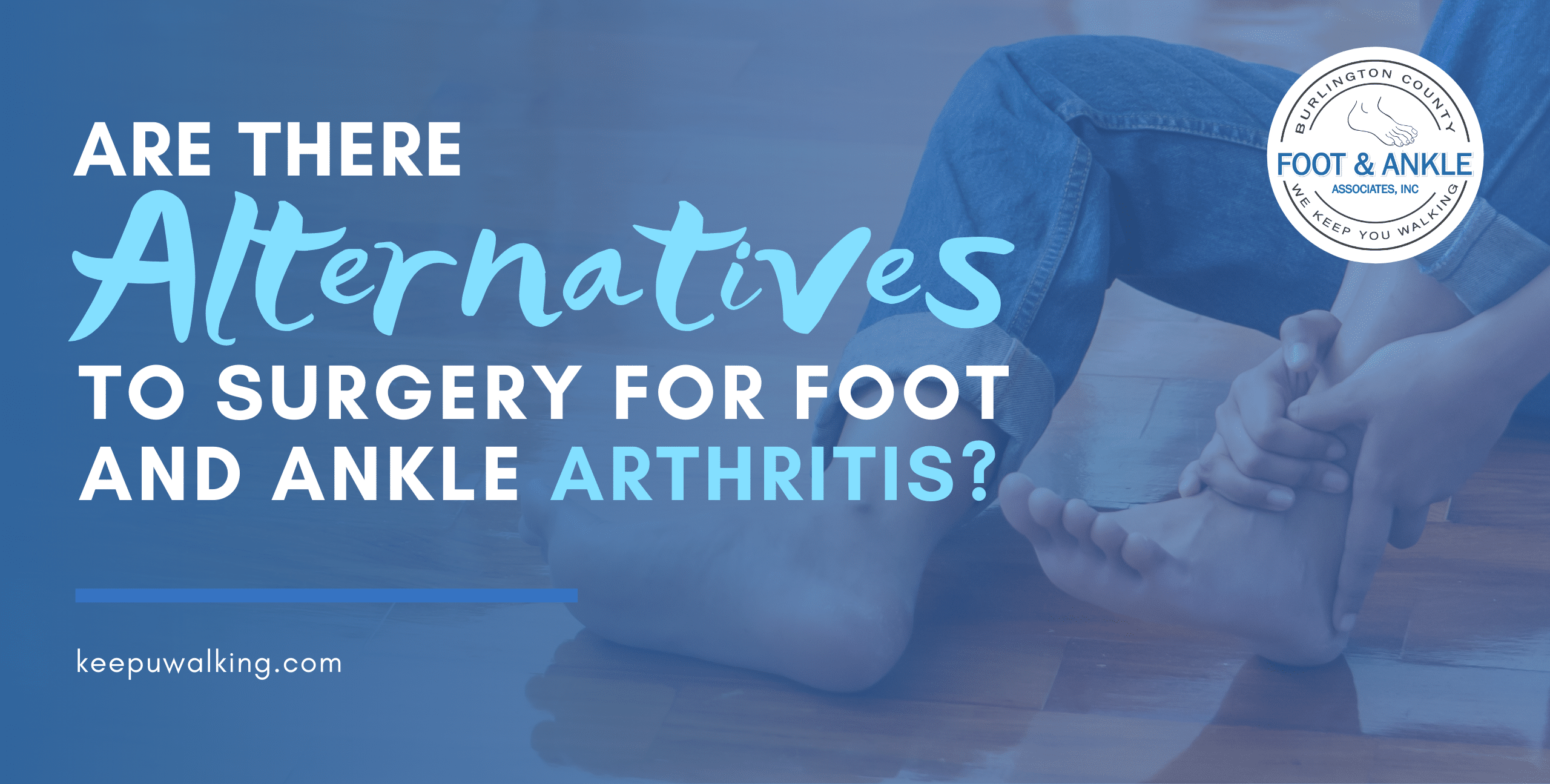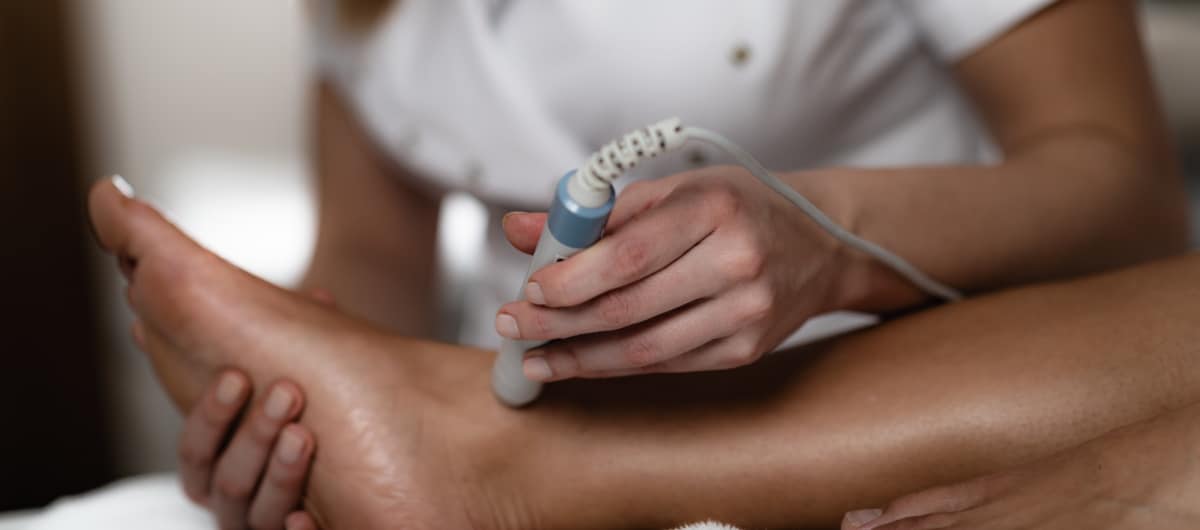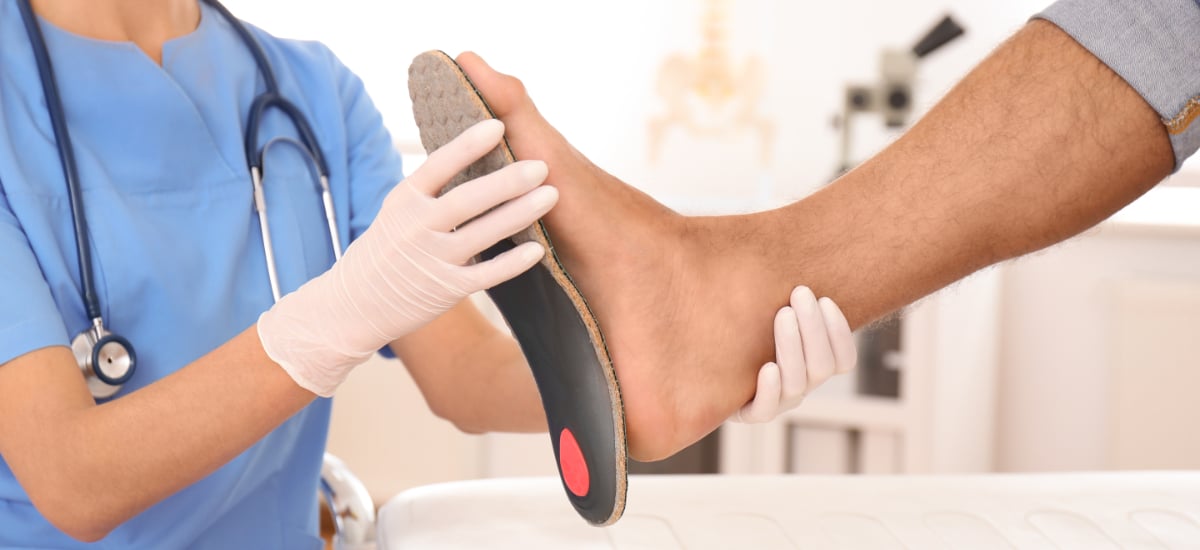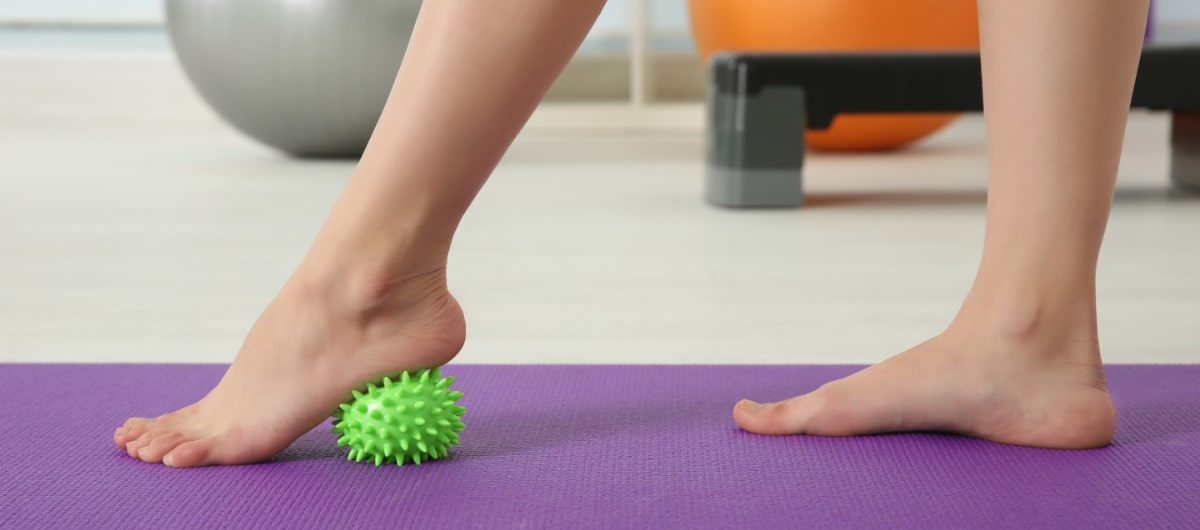Are There Alternatives to Surgery for Foot and Ankle Arthritis?
Daily life with foot or ankle arthritis can be a struggle.
In many cases, this is something that has been developing gradually over time. Pain when getting around has slowly become worse. Stiffness has slowly risen, while mobility has decreased.
However, there are cases where the symptoms of arthritis arrive rather suddenly in comparison, and they should not be forgotten about! There are more than 100 different types of arthritis in total, and many of them can reside within the joints of the foot and ankle.
Many patients jump to the thought of surgery as the only significant means of help for their condition, and we can understand why. If you have been on the receiving end of such a debilitating progression for so long, it’s easy to believe that only the “biggest” and most intrusive option may benefit you.
And, while it is true that there are cases of foot and ankle arthritis for which surgery is the only significant option, there are a great many other cases which it isn’t. Many non-surgical and alternative treatments have the potential to provide substantial relief and help maintain mobility and range of motion in many patients.
At Burlington County foot & Ankle Associates, our mission is to provide the best treatment that meets each patient’s specific condition and needs. For some, this might be surgery. For many others, more conservative treatments can have the preferred results without the risks and complications that may arise from a surgical procedure.
We are proud to provide many potential forms of treatment for addressing and managing the symptoms of foot and ankle arthritis. Below are just a few.
Multiwave Locked System (MLS) Laser Therapy
Hitting an arthritic joint with a laser might not be the first remedy most people would think of, but this advanced form of treatment has much more depth.
MLS Laser is a type of regenerative therapy, meaning it encourages the body’s own natural factors to work better in its favor. This is accomplished through the application of specific wavelengths of light energy into an area of damaged soft tissue (such as the cartilage and other tissues around a joint).
This light energy stimulates several natural responses in the area, including:
- Accelerating the responses of cells to grow and repair.
- Improving blood flow to the area, which supplies cells in need with more nutrients, growth factors, and other materials they need to function effectively. In many cases, new capillaries (the smallest blood vessels) are formed to provide even greater access for cells.
- As more blood flow comes in, it is able to carry out more excess fluid, helping to reduce swelling and inflammation.
MLS Laser therapy is scheduled over a course of weeks or months, depending on the condition. Many patients begin to feel positive effects after the very first treatment, however, and the results tend to stack over time.
In the case of arthritis, we might recommend returning to MLS laser over the long run. We will be sure to fully discuss the ins and outs of this advanced treatment with you if it is considered a viable option for your arthritis.
Custom Orthotics
It only makes sense that the more weight and pressure is placed on an arthritic joint, the more painful and damaged it can become. We must also take into account the way that the body can sometimes respond to damage, causing us to subconsciously change the way we walk and shift weight improperly across other parts of the body.
In such situations, custom orthotics can provide significant support, cushioning, and balance. Excess weight can be distributed off an injured joint, allowing for greater comfort, and a more natural gait can also be restored. A pair of custom orthotics might not only help joint pain in the foot or ankle, but also pain caused higher up the body by abnormal shifting and handling of weight.
Custom orthotics are made with exact specifications to each patient’s foot shape and needs, so no two pairs are ever alike. That said, your orthotics may need to be adjusted and refurbished over the long run to ensure they continue to do the best job for you.
Physical Therapy
Exercise for arthritic joints might sound counter-intuitive, but exercise does have positive effects. The key is moving in ways that build support around a joint and help maintain its mobility.
We are not talking about intense workouts here. In most cases, the types of stretches and exercises we would recommend are low-impact, keeping as much excess force off the joint as possible. Many exercises can be performed in water, which takes even further stress off ailing joints.
We can help you create a plan that works toward overall relief and greater mobility—and still have it be something you want to do!
Finding the Right Route for Your Arthritis
Additional possibilities exist for managing arthritis symptoms, including braces, steroid medications, and lifestyle changes. And if nothing provides the results we are looking for (or it is clear they would not), only then does surgery become a real consideration.
The absolute worst way you can approach arthritis treatment is by choosing to do nothing at all! The sooner you take the first steps toward treatment, the sooner you can start making strides toward improved comfort.
Call our Medford office at (609) 714-0052 to schedule an appointment with us. If you prefer to reach us electronically, you can send a message through our online contact form and a member of our staff will respond during normal office hours.
© Burlington County Foot & Ankle, Assoc., Inc. All Rights Reserved.
Privacy Policy | Terms & Conditions
Web Design by CP Solutions.
Marketed by VMD Services.




